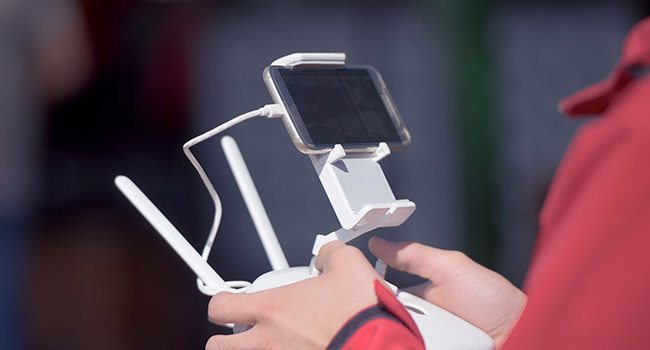Until recently, if a realtor needed aerial photography of large properties there were two not great options, using a grainy Google satellite image or hiring a very expensive chartered helicopter.
Unmanned aerial vehicles, or drones, are quickly opening the options for aerial photography. As an industry, drones are rapidly expanding accessibility by providing a more comprehensive picture at a much lower cost. They are transforming the way realtors sell property and becoming an essential tool for marketing.
Video and photography created by drones is used to showcase high-end real estate and large plots of land as well as to provide important data for developers on the property itself.
In commercial real estate, drones with infrared cameras can show a structure’s heat mapping and target areas of heat loss on a building. With new development areas, these cameras can show important details such as ground water locations and land features that aren’t visible to the human eye.
Companies like Cinema 360 Productions know the value of this new technology. This Mesa-based company provides a wide range of drone video and photography services working within the real estate and commercial development industries. Combining images from infrared drone video with measurements taken on-ground, they provide civil engineers and developers with much faster and more accurate data than previously was attainable.
Drones aren’t just for outdoor photography either, smaller drones can be flown indoors creating virtual walk-through tours and stunning views of the property exterior and yard. Interior drone photography and videography allows real estate agents to provide potential buyers an in-depth home or building tour regardless of location or accessibility.
This has become a consideration for many clients in the market for luxury homes, where generally shopping and researching is done online first. “These virtual tours are quickly becoming the way people shop for homes now,” says Rocio Sanchez of Cinema 360 Productions. “Realtors, brokers and customers can save time by virtually touring properties first”.
The National Associations of Realtors (NAR) has been working closely with the FAA Micro UAS Aviation Rulemaking Committee (ARC) to develop recommendations for performance based standards for the classification and operation of certain UAS that can be operated safely over people.
On June 21, 2016, the Federal Aviation Administration (FAA) issued its highly anticipated “Small Unmanned Aircraft Rule” (14 C.F.R. Part 107). In response to NAR members’ growing interest in using this technology in connection with their real estate businesses.
Part 107, or the Small UAS NPRM is designed to allow commercial drone use without a Section 333 Exemption. The proposed rule states that under certain conditions, a drone may be flown commercially without an airman’s certificate, also known as a pilot’s license.
Previously, drone pilots were unable to charge clients for flying time due to Federal Aviation Administration regulations. Many drone pilots utilized loopholes such as charging for “photo editing” and not the flying.
Since the passage of Part 107, pilots can get certified to fly up to 400 feet above private property provided the pilot is not flying over a populated area or out of sight. This has opened the possibilities for increased drone usage in an ever-expanding area.
Out of the first 1000 FAA exemptions granted under the 2016 ruling, 350 of them were for companies in real estate marketing. The National Association of Realtors is embracing UAV technology and according to Tom Salomone, president of NAR. In June 2016, NAR published an FAQ for the Small Unmanned Aircraft Rule to help real estate professionals using drones better navigate the legal and regulatory landscape.
Drone photography and videography provides an affordable alternative marketing tool to the real estate industry. Today, high quality photography, videography, and surveying is accessible in a way that could only have been wished for five or ten years ago. As we look to the future, Aerospace Arizona Association is working toward more business-friendly legislation to help continue grow the aerospace industry in our state.




